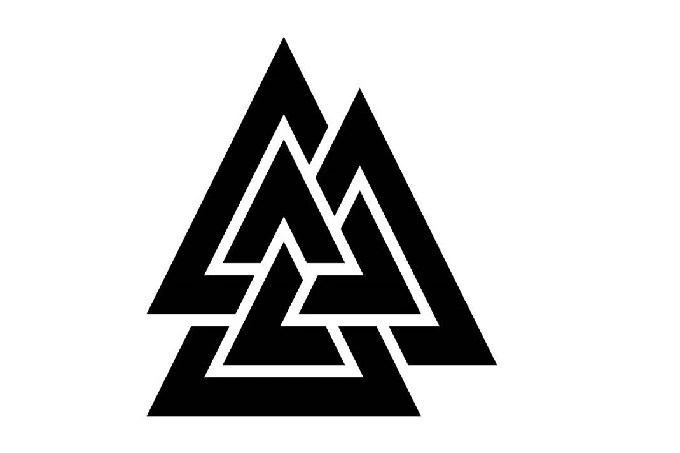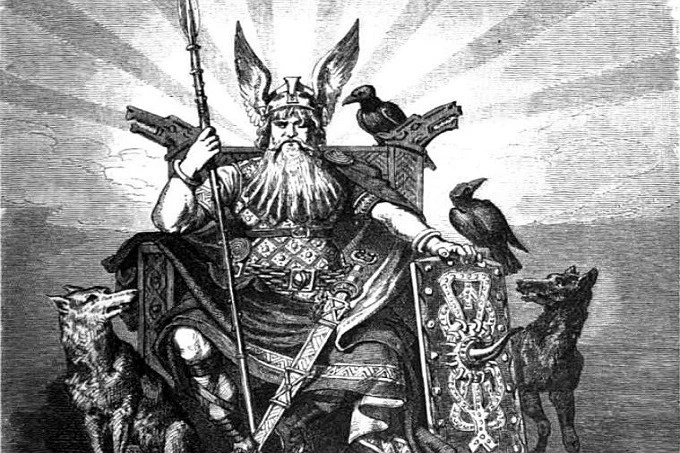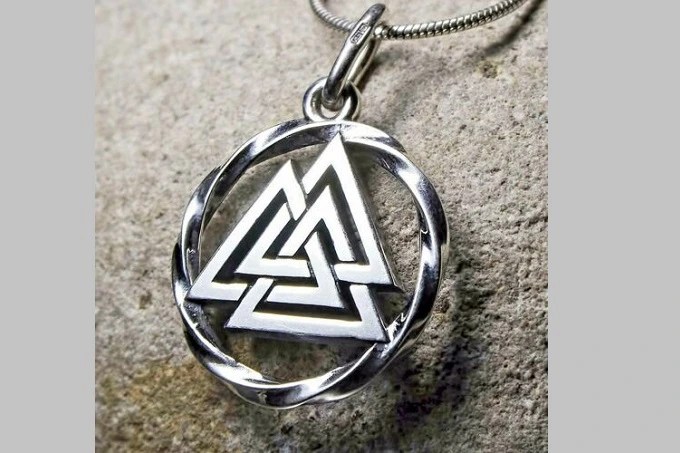One of the aspects of Scandinavian culture that is still largely unexplained and covered in mystery is Valknut. It’s been hundreds of years, and people are still arguing about it. This mysterious symbol, which can be seen on various items from the Viking Age, is surrounded by an extraordinarily dense web of an enigma.
The Valknut is seen on inscriptions, runic stones, rings, furniture, ships, and other artefacts associated with Nordic paganism. It is also found in the lands that were once inhabited by ancient Germanic tribes. This symbol is tattooed on the bodies of many people, and it is also worn as pendants. But what exactly does this cryptic symbol signify, and why does it have such a poor standing in the community? More on that later in the article.
Mysterious Symbol
The folklore, myths, and legends that make up Scandinavian mythology come from a source that is both extensive and detailed. Today, books and movies about some of the deities worshipped in cults practised by the peoples of the Nordic regions are enjoying phenomenal success. The many runic symbols used by the Vikings are incredibly well-known in today’s popular culture, and they are frequently fashioned into tattoos, pendants, and rings. The valknut is one of the most famous symbols, even though it is also considered contentious and covered in mystery. Archaeologists regularly come across it carved into old stones and on various items from the time of legendary Scandinavian warriors that they unearth. It should be no surprise that this holds significant significance for researchers.
The symbol of the valknut is known in two varieties, which at first glance may be very similar, but in fact, cardinally different from each other. The first variant represents three triangles intertwined in a closed chain, and the second – is three pseudo-triangles formed by one continuous line, which several times crosses itself. Today, unfortunately, this sign is known to be appropriated and used by certain national supremacy groups. The truth, however, is that the Scandinavian valknut has more to do with religion and funeral rites than politics or other issues.
The origin and meaning of the valknut

Since the valknut, the Celtic triskele, and the symbol of the three legs of the Isle of Man are all three-sided and composed of interlacing; the valknut is commonly associated with all three of these designs. Some historians also relate it to the ties that existed between Loki and Balder, as well as the paralysis that Odin was able to inflict on warriors. Some people think it represents Odin’s horse or his worship. It has been discovered in conjunction with several other patterns that depict Ragnarok. In addition, as he is associated with Odin, he may be seen as a symbol of the power to bind and unbind. In this respect, it is being used by Germanic ethnicism or neo-paganism, symbolizing Odin’s sacrificial offering and his triple nature.
Scientists don’t even know this symbol, which has a modern name. It comes from the Old Norse valr, meaning dead warriors, and knut, meaning knot. There is a legend that this sign is the heart of Gungnir, and this is a mythical giant who Thor defeated with his legendary hammer.
There are also theories about the figures being three, with three corners each, and in Scandinavian mythology, nine is a very important and frequent number. Here, experts believe, it symbolizes the nine worlds of Scandinavian cosmology: Niflheim, Muspelheim, Asgard, Midgard, Jotunheim, Vanaheim, Alfheim, Svartalfheim, Helheim.
In any case, all experts agree that the valknut is a symbol associated with death, and perhaps with certain religious or funerary customs, or maybe it represents death itself.
The valknut has been found on several archaeological artefacts. Among them are an 8th century AD Anglo-Saxon ring in the British Museum, a wooden bed inside an Oseberg boat (a Viking funeral ship found in Norway in 1904), one of the stones of Stora Hammars (8th-9th century AD on Gotland, Sweden), and the Tangelgard stone, an 8th century AD stele also on Gotland. The mark also appears in some Anglo-Scandinavian stones, called hogbacks, from the 10th-12th centuries AD in England and Scotland, such as the stones at Brompton in Yorkshire discovered in 1867. And on some crosses at Sockburn, Lastingham and Hawsker, also in English lands.
Valknut’s connection to Odin

Another piece of evidence that points to a connection between the Valknut and dead soldiers is the frequency with which he is represented beside Odin. This god is considered to be the most important and influential figure in all of Norse mythology. Even in depictions of the theValknut in which Odin is not present, other symbols that are intimately associated with him can be seen. For instance, there are depictions of horses and wolves on Anglo-Saxon tombstones. In Norse mythology, these creatures frequently served as Odin’s companions. It was Odin’s job to ferry the souls of the recently deceased to the underworld and then bring them back up to the world of the living. Additionally, he ruled over the hosts of the dead, such as the warriors of Valhalla and the Wild Hunt, and served as their captain.
In Norse mythology, Odin was also considered one of the most powerful mages. He and his assistants frequently used magic that could either bind or unbind. This meant that a powerful deity could bind a warrior’s thoughts, rendering him entirely useless in the heat of combat. On the other hand, Odin can remove all fear from a man, bestow incredible courage and inspiration onto him, and therefore render him invincible. This concept could be expressed symbolically through the use of the Valknut.
What about today?

Even today, the sign continues to be the topic of intense debate. Because of its captivating appearance, the valknut has been a popular choice for use in tattoos, jewellery, and even some logos. As an illustration, the German Football Association has adopted it as their official brand.
Unfortuitously, it was also a symbol that was frequently used by some people who supported white supremacy. Many people consider it a sign of hatred for the reasons stated above, which is not the way things should be at all. Because this symbol is such an important element of the culture of Northern Europe, it cannot be considered an unattractive symbol in its own right. Although various nationalist groups have made numerous attempts to steal it, it is not now considered offensive by any governmental body.
